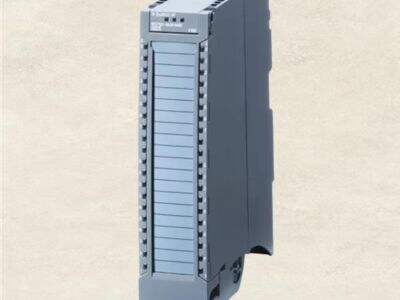Привіт. Для більш детальної інформації, будь ласка, зверніться до наступної статті про цю тему. Станкове обладнання дозволяє машинам на заводі працювати ефективніше та швидше. Ця стаття має проаналізувати, що таке частотні конвертори, чому заводи потребують їх, і як ми можемо правильно використовувати їх. Ми також розглянемо деякі поширені проблеми та їх рішення. Почнемо.
Що таке частотний конвертор?
Це спеціалізована техніка, яка дозволяє змінювати обертову швидкість електричної енергії. Вона також може змінювати частоту електричного струму, тому вона грає роль у керуванні тим, наскільки швидко можуть працювати двигуни. Це особливо корисно на заводях, де багато машин мають двигуни як свої робочі коні. У деяких випадках частотні конвертори називаються змінними частотними приводами, або скорочено VFD. Вони дозволяють двигунам працювати на різних швидкостях, а не лише на одній. Зміна швидкостей заощаджує енергію та робить машини ефективнішими.
Мотори, які можуть працювати на кількох швидкостях, є гнучкими для будь-яких потріб моменту. Навіть у випадку, коли машині потрібно просто повільшити для виконання завдання, це можна здійснити за допомогою частотного конвертера. Це інтерфейс hmi гнучкість дуже корисна для забезпечення того, щоб машини не витрачали енергію, коли їм не потрібно швидко рухатися.
Чому у заводських умовах використовуються частотні конвертери?
Ось багато великих переваг використання частотних конвертерів на заводі. Одна з головних переваг полягає у значному заощадженні енергії. Частотні конвертери можуть зменшити споживання енергії приблизно на 70%, регулюючи швидкість обертань моторів. Це означає, що заводи будуть платити менше за енергію, що корисно для бізнесу.
Ще одним величезним перевагом є те, що частотні конвертери покращують роботу пристроїв. Вони дозволяють моторам краще працювати, що призводить до більш ефективної роботи машин. Машина може довше прослужити, якщо вона добре працює. Це перетворюється на меншу кількість ремонтів та замін, що заощаджує ще більше грошей для заводу.
Вони не тільки економлять енергію і оптимізують продуктивність, але й гарантують стабільність процесів у заводі. Ефективне співпрацювання інтерфейс людини-машини машин допомагає виробляти більше продукції за менший час, що є важливою частиною виготовлення.
Де використовується частотний конвертер?
На заводі частотні конвертери широко використовуються. Їх можна побачити в конвеєрних системах, насосах, вентиляторах та іншому виді промислового обладнання. Наприклад, у конвеєрних системах частотні конвертери керують швидкістю конвеєрної стрічки. Це дуже важливо, тому що це забезпечує плавне потокування продукції через процес виробництва.
Циркуляційні насоси для перекачки рідини регулюються частотним конвертером. Це забезпечує правильну швидкість потоку рідини, щоб все працювало гладко. Використання змінних частотних приводів дозволяє вентиляторам регулювати повітряний потік та економію енергії, що забезпечує ефективну роботу систем. Здатність керувати цими швидкостями означає, що заводи можуть бути більш енергоекономічними.
Як налаштувати частотні конвертери
Зробити частотний конвертер частиною системи керування нічого надмірного, хоча це не так просто, як налаштування простого теплового насоса. Все стає набагато легшими, коли ви знаєте основи. Перш ніж ви зможете налаштувати частотний конвертер у інтерфейс hmi , вам доведеться навчитися правильно оперувати електродвигуном. Це включає знання входового напруги, який напруга подається на двигун, і максимальний струм, який двигун може подавати без виходу з ладу.
Також вам доведеться вивчити, як читати та змінювати ці параметри у частотному перетворювачі. Це критично важливо, оскільки якщо ми не встановимо правильно параметри, то наш двигун не буде працювати відповідно. Ці дані допомагають зрозуміти, як ефективно використовувати частотний перетворювач.
Виявлення проблем з частотними перетворювачами
У фабричних умовах буває, що машини починають поводитися неправильно, і часто виновником є саме частотний перетворювач. Ось декілька поширених помилок, які можуть виникнути. Прикладами таких проблем є перегрівання, дивні звуки, які видає машина, а також те, що двигун працює з іншою швидкістю. Це важливо враховувати, оскільки потрібно перевірити частотний перетворювач, якщо ви помітите хоча б одну з цих проблем.
Заміна цих компонентів вимагає діагностики і може бути виконана за допомогою мультиметра. Цей прилад дозволяє виміряти напругу та поточність, що входять та виходять з частотного конвертера. Це дає можливість перевірити, чи проблема пов'язана з питанням живлення шляхом перегляду цих вимірювань. Перевірте налаштування частотного конвертера, щоб переконатися, що він було правильно налаштований. Якщо ви підозрюєте, що щось не так, коригування налаштувань може допомогти.
Висновок
Підсумовуючи, однією з дуже значущої апаратури, яку можна знайти у заводських цехах, є частотні перетворювачі, які забезпечують більш ефективну роботу машин. Вони економлять енергію, покращують роботу машин та забезпечують ефективніший процес виробництва. Для інженерів, які використовують один з цих частотних перетворювачів у своєму заводі, дуже важливо правильно навчитися й налаштувати його, а також вирішувати будь-які проблеми, які виникають. Впроваджуючи ці поради, системи будуть працювати гладко та ефективно. І не забувайте, якщо вам потрібна допомога з вашими машинами чи системою автоматизації, HYST завжди готовий допомогти. Вони готові супроводжувати всі ваші потреби у сфері автоматизації.
 EN
EN
 AR
AR
 BG
BG
 HR
HR
 CS
CS
 DA
DA
 NL
NL
 FI
FI
 FR
FR
 DE
DE
 EL
EL
 HI
HI
 IT
IT
 JA
JA
 KO
KO
 NO
NO
 PL
PL
 PT
PT
 RO
RO
 RU
RU
 ES
ES
 SV
SV
 CA
CA
 TL
TL
 IW
IW
 ID
ID
 LV
LV
 LT
LT
 SR
SR
 SK
SK
 SL
SL
 UK
UK
 VI
VI
 SQ
SQ
 ET
ET
 GL
GL
 HU
HU
 MT
MT
 TH
TH
 TR
TR

%20(1)/images/share.png)
